[English] 日本語
 Yorodumi
Yorodumi- EMDB-10823: Phase-plate cryo-EM structure of the Widom 601 CENP-A nucleosome ... -
+ Open data
Open data
- Basic information
Basic information
| Entry | Database: EMDB / ID: EMD-10823 | |||||||||||||||
|---|---|---|---|---|---|---|---|---|---|---|---|---|---|---|---|---|
| Title | Phase-plate cryo-EM structure of the Widom 601 CENP-A nucleosome core particle (class S0) | |||||||||||||||
 Map data Map data | Phase-plate cryo-EM structure of the Widom 601 CENP-A nucleosome core particle (class S0) | |||||||||||||||
 Sample Sample |
| |||||||||||||||
| Biological species |  Homo sapiens (human) / Homo sapiens (human) / | |||||||||||||||
| Method | single particle reconstruction / cryo EM / Resolution: 4.2 Å | |||||||||||||||
 Authors Authors | Boopathi R / Danev R / Khoshouei M / Kale S / Nahata S / Ramos L / Angelov D / Dimitrov S / Hamiche A / Petosa C / Bednar J | |||||||||||||||
| Funding support |  France, 4 items France, 4 items
| |||||||||||||||
 Citation Citation |  Journal: Nucleic Acids Res / Year: 2020 Journal: Nucleic Acids Res / Year: 2020Title: Phase-plate cryo-EM structure of the Widom 601 CENP-A nucleosome core particle reveals differential flexibility of the DNA ends. Authors: Ramachandran Boopathi / Radostin Danev / Maryam Khoshouei / Seyit Kale / Sunil Nahata / Lorrie Ramos / Dimitar Angelov / Stefan Dimitrov / Ali Hamiche / Carlo Petosa / Jan Bednar /      Abstract: The histone H3 variant CENP-A marks centromeres epigenetically and is essential for mitotic fidelity. Previous crystallographic studies of the CENP-A nucleosome core particle (NCP) reconstituted with ...The histone H3 variant CENP-A marks centromeres epigenetically and is essential for mitotic fidelity. Previous crystallographic studies of the CENP-A nucleosome core particle (NCP) reconstituted with a human α-satellite DNA derivative revealed both DNA ends to be highly flexible, a feature important for CENP-A mitotic functions. However, recent cryo-EM studies of CENP-A NCP complexes comprising primarily Widom 601 DNA reported well-ordered DNA ends. Here, we report the cryo-EM structure of the CENP-A 601 NCP determined by Volta phase-plate imaging. The data reveal that one ('left') 601 DNA end is well ordered whereas the other ('right') end is flexible and partly detached from the histone core, suggesting sequence-dependent dynamics of the DNA termini. Indeed, a molecular dynamics simulation of the CENP-A 601 NCP confirmed the distinct dynamics of the two DNA extremities. Reprocessing the image data using two-fold symmetry yielded a cryo-EM map in which both DNA ends appeared well ordered, indicating that such an artefact may inadvertently arise if NCP asymmetry is lost during image processing. These findings enhance our understanding of the dynamic features that discriminate CENP-A from H3 nucleosomes by revealing that DNA end flexibility can be fine-tuned in a sequence-dependent manner. | |||||||||||||||
| History |
|
- Structure visualization
Structure visualization
| Movie |
 Movie viewer Movie viewer |
|---|---|
| Structure viewer | EM map:  SurfView SurfView Molmil Molmil Jmol/JSmol Jmol/JSmol |
| Supplemental images |
- Downloads & links
Downloads & links
-EMDB archive
| Map data |  emd_10823.map.gz emd_10823.map.gz | 9.8 MB |  EMDB map data format EMDB map data format | |
|---|---|---|---|---|
| Header (meta data) |  emd-10823-v30.xml emd-10823-v30.xml emd-10823.xml emd-10823.xml | 16.5 KB 16.5 KB | Display Display |  EMDB header EMDB header |
| Images |  emd_10823.png emd_10823.png | 93.4 KB | ||
| Archive directory |  http://ftp.pdbj.org/pub/emdb/structures/EMD-10823 http://ftp.pdbj.org/pub/emdb/structures/EMD-10823 ftp://ftp.pdbj.org/pub/emdb/structures/EMD-10823 ftp://ftp.pdbj.org/pub/emdb/structures/EMD-10823 | HTTPS FTP |
-Validation report
| Summary document |  emd_10823_validation.pdf.gz emd_10823_validation.pdf.gz | 267 KB | Display |  EMDB validaton report EMDB validaton report |
|---|---|---|---|---|
| Full document |  emd_10823_full_validation.pdf.gz emd_10823_full_validation.pdf.gz | 266.1 KB | Display | |
| Data in XML |  emd_10823_validation.xml.gz emd_10823_validation.xml.gz | 5.2 KB | Display | |
| Arichive directory |  https://ftp.pdbj.org/pub/emdb/validation_reports/EMD-10823 https://ftp.pdbj.org/pub/emdb/validation_reports/EMD-10823 ftp://ftp.pdbj.org/pub/emdb/validation_reports/EMD-10823 ftp://ftp.pdbj.org/pub/emdb/validation_reports/EMD-10823 | HTTPS FTP |
-Related structure data
- Links
Links
| EMDB pages |  EMDB (EBI/PDBe) / EMDB (EBI/PDBe) /  EMDataResource EMDataResource |
|---|
- Map
Map
| File |  Download / File: emd_10823.map.gz / Format: CCP4 / Size: 10.5 MB / Type: IMAGE STORED AS FLOATING POINT NUMBER (4 BYTES) Download / File: emd_10823.map.gz / Format: CCP4 / Size: 10.5 MB / Type: IMAGE STORED AS FLOATING POINT NUMBER (4 BYTES) | ||||||||||||||||||||||||||||||||||||||||||||||||||||||||||||
|---|---|---|---|---|---|---|---|---|---|---|---|---|---|---|---|---|---|---|---|---|---|---|---|---|---|---|---|---|---|---|---|---|---|---|---|---|---|---|---|---|---|---|---|---|---|---|---|---|---|---|---|---|---|---|---|---|---|---|---|---|---|
| Annotation | Phase-plate cryo-EM structure of the Widom 601 CENP-A nucleosome core particle (class S0) | ||||||||||||||||||||||||||||||||||||||||||||||||||||||||||||
| Projections & slices | Image control
Images are generated by Spider. | ||||||||||||||||||||||||||||||||||||||||||||||||||||||||||||
| Voxel size | X=Y=Z: 1.06 Å | ||||||||||||||||||||||||||||||||||||||||||||||||||||||||||||
| Density |
| ||||||||||||||||||||||||||||||||||||||||||||||||||||||||||||
| Symmetry | Space group: 1 | ||||||||||||||||||||||||||||||||||||||||||||||||||||||||||||
| Details | EMDB XML:
CCP4 map header:
| ||||||||||||||||||||||||||||||||||||||||||||||||||||||||||||
-Supplemental data
- Sample components
Sample components
-Entire : CENP-A Nucleosome core particle with 145 base pairs of Widom 601 ...
| Entire | Name: CENP-A Nucleosome core particle with 145 base pairs of Widom 601 sequence |
|---|---|
| Components |
|
-Supramolecule #1: CENP-A Nucleosome core particle with 145 base pairs of Widom 601 ...
| Supramolecule | Name: CENP-A Nucleosome core particle with 145 base pairs of Widom 601 sequence type: complex / ID: 1 / Parent: 0 / Macromolecule list: #1-#6 |
|---|
-Supramolecule #2: CENP-A
| Supramolecule | Name: CENP-A / type: complex / ID: 2 / Parent: 1 / Macromolecule list: #1 |
|---|---|
| Source (natural) | Organism:  Homo sapiens (human) Homo sapiens (human) |
| Recombinant expression | Organism:  |
-Supramolecule #3: Histones H2A, H2B, H4
| Supramolecule | Name: Histones H2A, H2B, H4 / type: complex / ID: 3 / Parent: 1 / Macromolecule list: #2-#4 |
|---|---|
| Source (natural) | Organism: |
| Recombinant expression | Organism:  |
-Supramolecule #4: Widom 601 DNA
| Supramolecule | Name: Widom 601 DNA / type: complex / ID: 4 / Parent: 1 / Macromolecule list: #5-#6 |
|---|---|
| Source (natural) | Organism: synthetic construct (others) |
| Recombinant expression | Organism:  |
-Experimental details
-Structure determination
| Method | cryo EM |
|---|---|
 Processing Processing | single particle reconstruction |
| Aggregation state | particle |
- Sample preparation
Sample preparation
| Buffer | pH: 7.4 |
|---|---|
| Grid | Model: Quantifoil R1.2/1.3 / Material: COPPER / Mesh: 200 / Support film - Material: CARBON / Support film - topology: HOLEY / Pretreatment - Type: GLOW DISCHARGE / Pretreatment - Atmosphere: OTHER |
| Vitrification | Cryogen name: ETHANE-PROPANE / Chamber humidity: 95 % / Chamber temperature: 277 K / Instrument: FEI VITROBOT MARK IV |
- Electron microscopy
Electron microscopy
| Microscope | FEI TITAN KRIOS |
|---|---|
| Image recording | Film or detector model: GATAN K2 SUMMIT (4k x 4k) / Detector mode: COUNTING / Digitization - Frames/image: 2-38 / Number grids imaged: 2 / Number real images: 2608 / Average exposure time: 7.6 sec. / Average electron dose: 50.0 e/Å2 |
| Electron beam | Acceleration voltage: 300 kV / Electron source:  FIELD EMISSION GUN FIELD EMISSION GUN |
| Electron optics | C2 aperture diameter: 50.0 µm / Calibrated defocus max: 0.3 µm / Calibrated defocus min: 0.3 µm / Calibrated magnification: 47000 / Illumination mode: FLOOD BEAM / Imaging mode: BRIGHT FIELD / Cs: 2.7 mm / Nominal defocus max: 0.5 µm / Nominal defocus min: 0.5 µm / Nominal magnification: 47000 |
| Sample stage | Specimen holder model: FEI TITAN KRIOS AUTOGRID HOLDER / Cooling holder cryogen: NITROGEN |
| Experimental equipment |  Model: Titan Krios / Image courtesy: FEI Company |
 Movie
Movie Controller
Controller










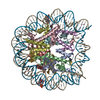

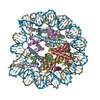
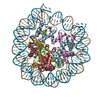
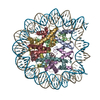

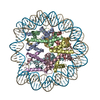
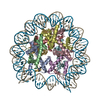
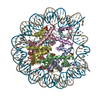
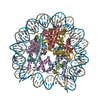
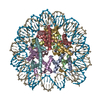
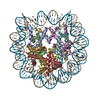
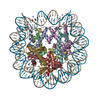
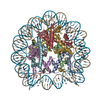
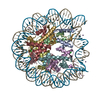
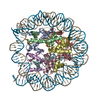
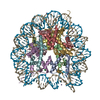

 Z (Sec.)
Z (Sec.) Y (Row.)
Y (Row.) X (Col.)
X (Col.)





















